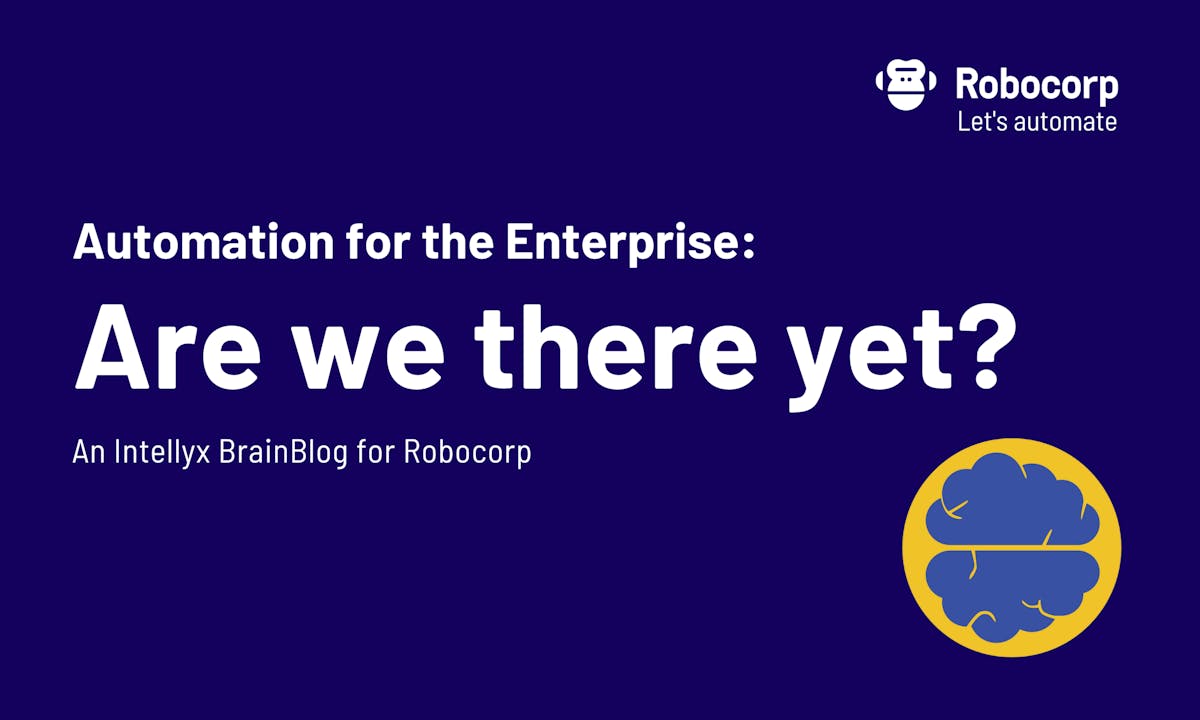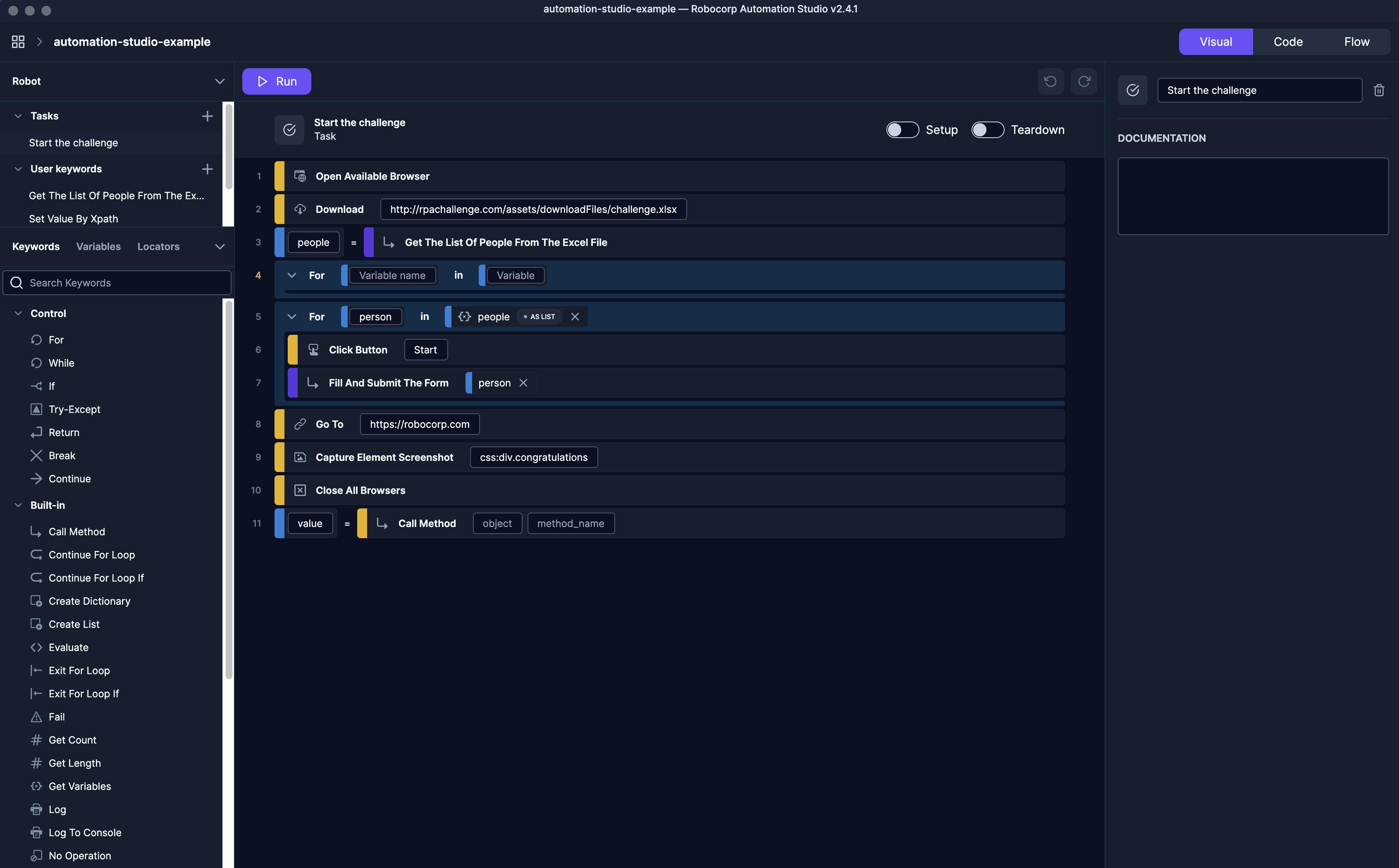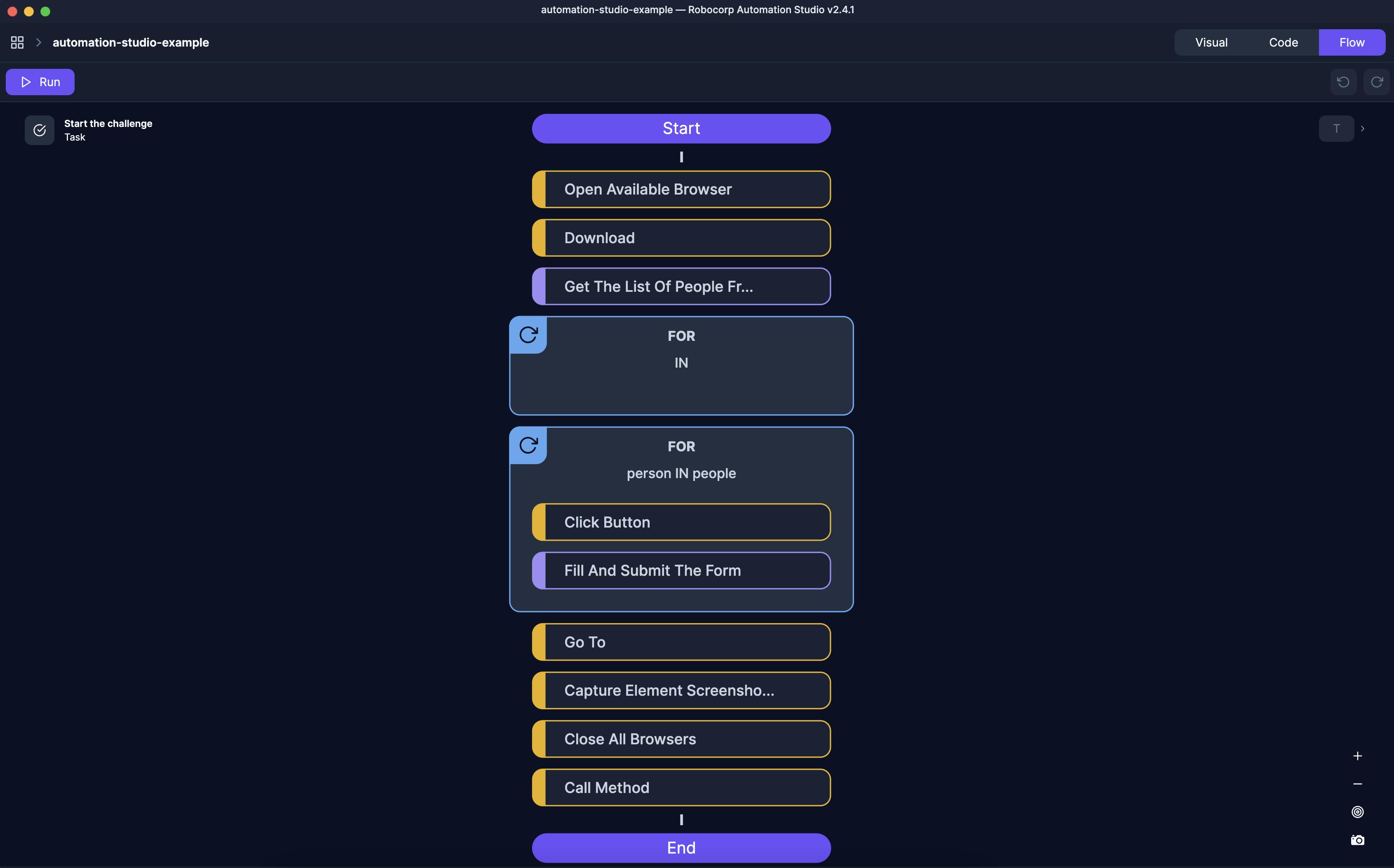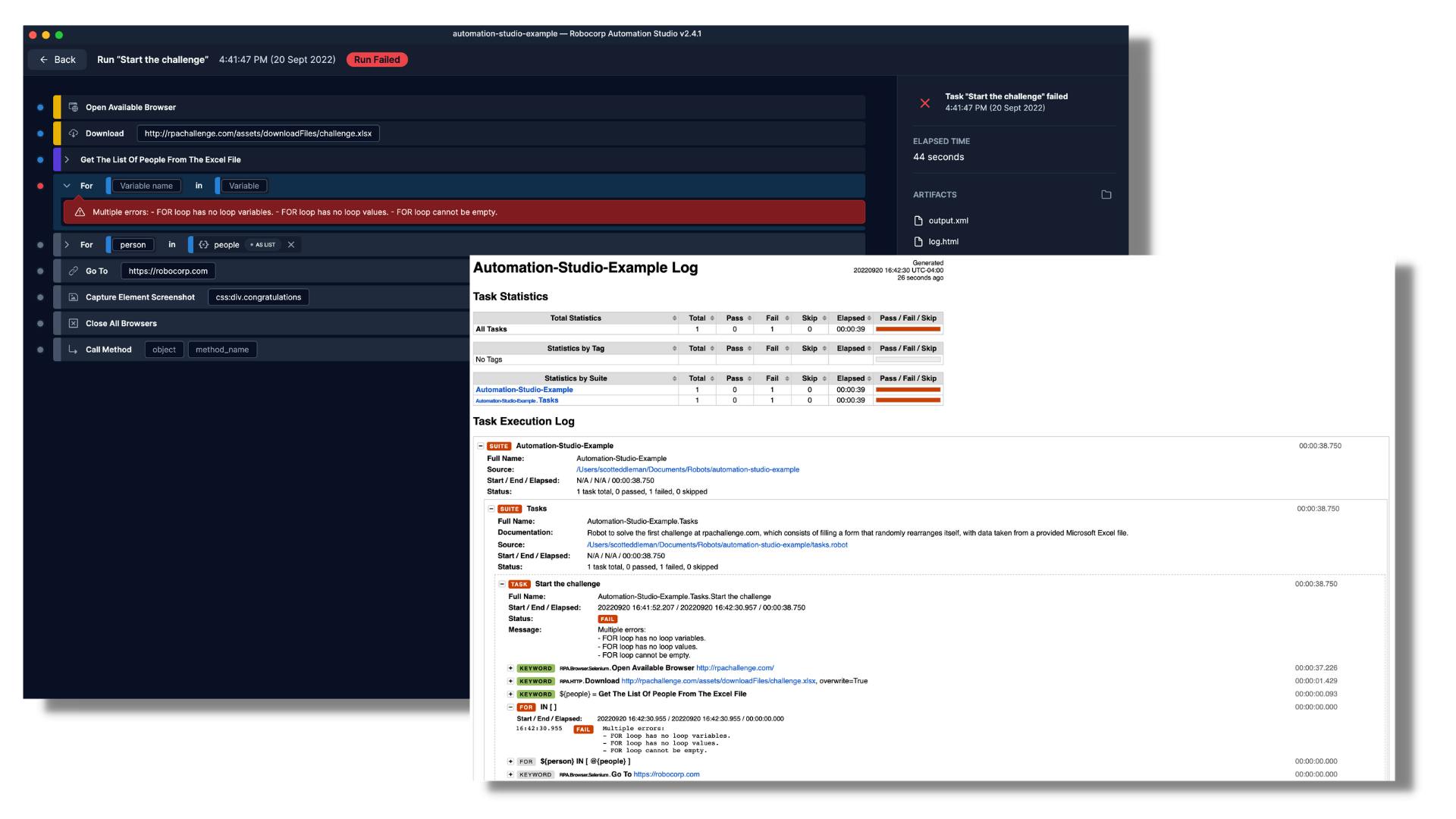
Automation for the Enterprise: Are we there yet?
Looking at the new Robocorp Automation Studio
September 23, 2022 – An Intellyx BrainBlog for Robocorp, by Jason English
For as long as we’ve had cartoons and sci-fi television shows, we’ve seen stories of a friendly robot assistant who could take care of boring household chores and repetitive work tasks.
Fast forward to now, and we have a relatively new but maturing robotic process automation (or RPA) space that is cresting a two-billion dollar market cap, fueled by the success of a handful of major players and many more startups.
However, there’s a problem with gauging the adoption level of RPA using today’s arbitrary market definitions: the much larger adjacent spaces of business process automation and low-code development tools. Businesses have always automated processes through other methods, and software vendors have been trying to reinvent automation for decades now.
What will it take for RPA to deliver sustainable results and reach widespread adoption among global enterprises?
What’s holding back enterprise-grade adoption of RPA?
- Initial investment cost. Per-seat developer tool pricing, per-server/per-node licensing, and complex per-bot and per-run cost scenarios are common in this arena, even when trial offers are extended as a starting incentive.
Surpassing software costs which can at least be predicted, the more initial expense comes from the labor necessary to mine data and design workflows that would create a robust enough piece of automation to augment or replace human work and attention. - Poor reusability / brittle bots. Behind the scenes of a captured screen-based workflow, there is a brittle script – even in a no-code scenario – that is likely very procedural. If different items and data appear on the screen or the steps change in order, the bot breaks. Repairing them requires arcane code commands and configuration methods that can exceed initial setup labor costs.
- Incompatible team skill sets. It’s really hard to find automation tools that fit perfectly into that habitable “goldilocks” skill zone for the team. Non-technical team members can have difficulty managing complex workflows, much less seeing all the decision nodes and data integrations in a no-code environment once it scales in production.
Conversely, developers may be stymied when bots are released or updated unexpectedly and break for unobservable reasons. Dropping in to fix issues is especially frustrating when there is no clear way to interact with code or get detailed feedback from infrastructure elements. - Increasing operational expense. Incremental costs always seem small at first. Then as more RPA bots are rolled out and run, each can generate cloud costs for compute and storage, and require additional support costs. Shutting off the money valve for recurring processes is anything but automatic when bots are left running, become idle, or are not needed anymore.
- Vendor lock-in. Proprietary design tools, engines, and bots keep everything in an opaque box, and as enterprises start to rely on RPA, the switching costs away from a vendor only increase. Can you take your automation with you, and export and run your bots as code?
A generational wave: Gen1 to Gen2 RPA
Obviously, lots of early adopters have already moved past their pilot stages and are planning to expand their automation footprint even more, as RPA market growth numbers clearly bear out.
But if that growth line doesn’t seem to be bending upwards like a hockey stick yet, there’s a good reason. We’re actually in between two distinctive waves, or generations of RPA adoption.
Gen1 RPA rose to prominence very quickly, much like the early onset of the server virtualization market, because it provided an almost immediate initial ROI when adopted. As it turns out, eliminating 25% of repetitive tasks from every user’s day with a bot paid back quick returns. Much like a one-time shot of replacing physical servers and desktops with hypervisors to immediately reduce data center costs by 25% was also a welcome blast to the bottom line.
Gen2 RPA solutions aim to extend value well beyond episodic task automation gains with a more continuous process of increasing bot productivity, scalability, and resiliency, while extending intelligent automation for complex business processes throughout the enterprise, with lower capital outlay and operational cost.
Of course, RPA vendors who were around for Gen1 can stay in the game by developing or acquiring Gen2 solutions, as this market heats up and customer results come in. We covered this adoption pattern in depth over the last year in our Gen2 RPA for All blog series for Robocorp.
Catching a demo in Robocorp’s Automation Studio
With an eye on how to deliver on the promise of Gen2 RPA, we had a chance to take in a product demo from Robocorp of their just-released Automation Studio solution. Here are some highlights we noticed within this SaaS environment for bot development and editing.

Low cost of entry. Automation Studio isn’t priced on a per-seat basis, it’s just included automatically as an editing interface with any Robocorp account. Technically, users could program their own bots for free in the open-source Robot Framework tool contributed by Robocorp, which is basically Python with some declarative statements for automation.
For companies wanting to use a managed service and execution environment, the vendor offers a free-forever single-user account of their Control Room with limited resources, but the first Starter ($49/month) and Flex ($299/month) allow from 4 to 40 parallel processes with low per-minute incremental fees for using more bot runtime than allocated. The company also offers custom pricing to partners and enterprises with unique needs.
Reusability and resiliency. Automation Studio takes a code-native low-code approach to creating open-source Gen2 RPA. It generates code in sync with the visual design environment, therefore resulting bots can be cloned, adjusted, and refactored, and attributes and actions can be applied across sets of bots.
In addition, there is already a growing library of pre-built automation templates for frequently recurring horizontal and vertical business tasks, like Accounts Receivable / Accounts Payable, employee onboarding, and customer service chatbots. These are downloadable from Robocorp’s Portal.
Support different skill levels in parallel. The ability to toggle between visual, code, and flow modes of bot design and maintenance is a key transformational aspect of this studio interface.
For business users, if you’ve ever seen Google Blockly or the Scratch programming environment for kids, there are similarities, though Robocorp has designed its own version of a visual development environment of actions on a timeline.

Developers can flip a switch and see very human-readable, well-formatted Python automation code that is a 1:1 match with the visual studio to make direct adjustments to code, and enable any specific integration aspects.
The flow view is especially attractive because it shows exactly how the logic works. Redundant loops or problematic logic like nested IF/THEN statements or exception handling can then be weeded out or compartmentalized from here.
Reduced OPEX. Enterprises can try cutting capital expenditures, but they often lack the ability to prevent the inevitable bloat of reserved infrastructure and compute costs, and an even bigger outlay of labor costs for bot maintenance.
Bots created in Automation Studio can then be deployed and managed in Robocorp’s orchestration tool, called Control Room. This is where the company’s pricing and efficient parallel bot execution really reduces costs, as parallel cloud machines can be scaled and then collapsed, stopping the meter the minute they are no longer in use.
The ease of use of visual, code, and flow views reduces hands-on time spent looking for anomalies. Automation Studio has in-app debugging and Control Room offers advanced logging and traceability. This helps developers quickly pinpoint and fix any bot issues.

If you’ve already created bots on another RPA platform like BluePrism, UiPath or Automation Anywhere, Automation Studio offers a Gen1 bot migration tool and supports Windows automation elements.
Take your automations with you. Because the digital worker code is open source Python / Robot Framework it can be taken out of the Robocorp environment and run with other solutions. It seems likely, though, that customers would stay to leverage Robocorp’s growing set of libraries and keywords that help creators automate business processes across popular and legacy platforms, applications, and office productivity suites.
The Intellyx Take
Perhaps the first generation of RPA bots seemed more durable than today’s because they weren’t expected to do more than mimic sequences of clicks and keystrokes.
Beyond value and reusability, much of the continuous improvement we are looking for in the next generation of RPA solutions centers around fulfilling the right form factors for two distinct audiences: non-technical business expert users who want to augment the human workforce with a digital one, and developers who want to build, release and maintain automation assets like any other piece of code.
Robocorp’s new Automation Studio seems to fulfill the requirements of both of these audiences, so everyone in the enterprise can own the automation process.
© 2022 Intellyx LLC. Intellyx retains editorial control over the content of this document. At the time of writing, Robocorp is an Intellyx customer.